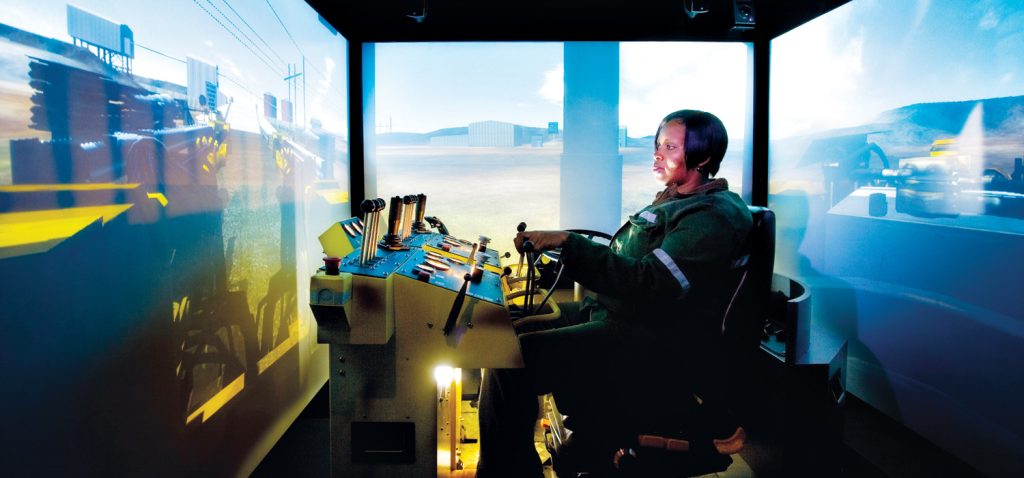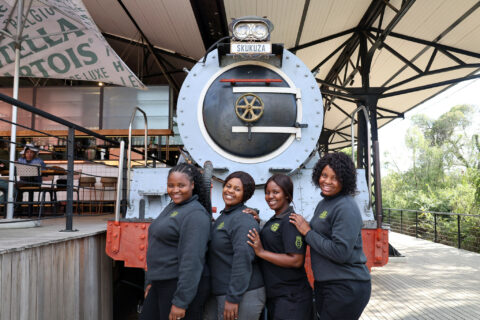SA Mining
Equipping The Workforce For A Digital Future
South Africa’s mining industry is acutely aware of its responsibility to bring people – employees and communities – along with it as it navigates the changes and challenges presented by the Fourth Industrial Revolution (4IR).
The industry knows that it must be part of this tech-driven revolution if it is to remain globally competitive from an economic, safety and health perspective. Huge strides have been taken in the past few years to accelerate the adoption of technology in mining. But as mines become more automated, skills gaps are growing evident in the 450 000-strong workforce. To close this gap, mining companies have had to consider ways to skill, upskill or reskill employees.
Anticipating this, the Minerals Council’s modernisation programmes include Mining Skills 4.0, which is a multi-year programme aimed at developing a reskilling and upskilling framework and strategy to assist mining companies in achieving a just transition of their workforce into the 4IR.
The 2020 phase of this programme involved an in-depth analysis and articulation of the current skill and aptitude sets available within the mining industry. With a focus on rock drill operators as a pilot occupation, the analysis also considered the skills that would be required in the mining industry and associated industries in future.
This year, with the focus on health, safety and productivity, a technology scouting report on innovative Education Technology (EdTech) solutions with high potential for positive impact in mining was completed. This report showed that the application of 4IR technologies and immersive education and training can speed up capacity development while improving health and safety outcomes in high-risk industries like mining.
Recently Minerals Council and Harmony Gold partnered with innovation firm RIIS to run an open innovation showcase aimed at identifying high-potential educational innovations and cutting-edge technologies that could be used for skills training and Zero Harm production in the South African mining industry.
Looking for ready-to-implement training innovations, a call for proposals resulted in six short-listed innovations being showcased at a hybrid event on 30 September and 1 October 2021. While only one winner was named, the end goal of the showcase was achieved in that it enabled collaboration between mining companies and EdTech suppliers, boosted cross-industry cooperation and empowered entrepreneurs so that they had an opportunity to gain access to the market and demo their solutions directly to potential clients.
While zero harm remains the focus, many Minerals Council members view the introduction of new technologies in their training delivery and value chain as critical for increasing the effectiveness and cost-efficiency of their training, and for enabling digital literacy development in an organic manner among the workforce. What we have found is that companies are adapting training and the inclusion of tech-driven training in ways unique to their operating contexts.
At Glencore’s Thorncliffe chrome mine, trainees undergo training in classrooms in the underground training centre before progressing to practical training in the two 360° simulators.
Thorncliffe has established a first-of-its-kind virtual reality (VR) training wall some 400m below surface for trainees to experience the real mine environment while simulating rock identification, blasting, timing and consequences, gases and ventilation. The VR immersion provides theoretical knowledge as the trainee proceeds with simulated tasks before they go into a real-world working environment.
VR is also used at South Deep where three QCTO (Quality Council for Trades & Occupations) curricula components have been adapted to be taught almost entirely in the VR system. Once individuals display competence in the VR courses, they progress to a surface mock-mine environment where their skills are honed before they get introduced to the real work environment.
Tech-driven training success stories are not limited to immersive learning though. Gamified and mobile micro-learning has already been used in other industries and has the potential to be adapted for mining applications that reinforce safety and behavioural change.
A soccer-themed mobile game designed around gamification principles is used at Takealot to onboard and continuously train delivery drivers and PepsiCo is leveraging existing popular games like Minecraft for Lean Six Sigma Training in distribution plants.
The extension of learning well beyond the traditional flipcharts and training videos means most aspects of actual mining can be taught and applied in low-risk environments. These same training techniques can be used to reinforce safety and health messages and help encourage behavioural change once trainees graduate to the workforce.
The advantage of 4IR technologies applied in a people-centric manner is that it creates new, better-paid, safer, healthier, and more fulfilling jobs. These advancements will create a more skilled workforce as we strive to make mines safe and healthy places to work. In South Africa, our modernisation strategies need to be about turning 4IR technologies into allies which help people, rather than be perceived as a threat to replace them. It is only through a combination of people and technology that we can reimagine mining.







 Sign-up and receive the Business Media MAGS newsletter OR SA Mining newsletter straight to your inbox.
Sign-up and receive the Business Media MAGS newsletter OR SA Mining newsletter straight to your inbox.